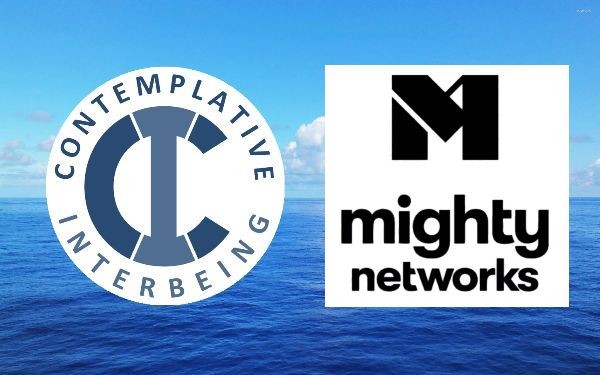As we embark on this journey of contemplating grief as a spiritual practice, we find ourselves standing at the threshold of a profound and transformative experience. We recognize that grief is not merely a response to loss, but an invitation to turn toward love rather than run away from it. In our shared human experience, we all encounter grief, for it is the inevitable companion of love. Whether we have faced significant personal losses or not, we are touched by the collective grief that permeates our world, a testament to our interconnectedness and capacity for empathy.
We’ve come to understand that grief and love are inextricably linked, two sides of the same coin. As we navigate the landscape of loss, we discover that our relationships with those who have passed can evolve into metaphysical connections, transcending the boundaries of physical presence. This realization opens up new dimensions of spiritual understanding and comfort.
In our exploration of grief, we’ve learned the importance of presence and embodiment. By fully inhabiting our grief, being present in our bodies and minds to the experience, we honor both our loss and the one we’ve lost. This act of presence becomes a form of prayer, a sacred offering of our attention and love.
As we delve deeper into our grief journey, we encounter the concept of ancestors as spiritual guides. Whether we perceive these guides as objectively real or as constructs of our imagination, we find richness and support in opening ourselves to their presence. Our grandmothers, spiritual teachers, and loved ones who have passed become part of our “soul team,” offering guidance and comfort in times of need.
We’ve come to see grief not as a linear process with clear stages to be checked off, but as a spiritual path with universal features that we revisit time and again. The twelve thresholds we’ve identified – shattering, grace, solitude, disillusionment, outrage, disobedience, fearlessness, inquiry, yearning, surrender, belonging, and return – serve as waypoints on our journey. We pass through these thresholds repeatedly, each time gaining new insights and deepening our understanding.
In our grief, we’ve discovered the profound importance of community. We’ve found solace and strength in coming together with others who are walking similar paths. This community often looks different from what we might have expected, a “rag-tag bunch of wounded healers” who understand our pain in ways others cannot. We’ve learned to be open to unexpected connections, finding spiritual kinship in surprising places.
Art and poetry have become essential companions on our grief journey. We’ve found that these creative expressions can capture and convey the visceral, heart-centered nature of grief in ways that logical analysis cannot. Through art, music, and poetry, we’ve been able to give voice to the ineffable aspects of our experience, finding beauty and meaning in the midst of our pain.
As we’ve walked this path, we’ve had to confront societal expectations about grief. We’ve learned to reject arbitrary timelines and notions of “getting over it.” We understand now that grief is a lifelong journey, one that ebbs and flows but never truly ends. This realization has been liberating, allowing us to honor our grief without shame or pressure to “move on.”
In our darkest moments, we’ve discovered unexpected gifts. Our capacity for childlike wonder and joy has expanded, even as we’ve wrestled with profound sorrow. We’ve found ourselves laughing in the midst of tears, experiencing moments of pure delight amidst our pain. At first, these experiences brought guilt – how could we feel joy when we’d lost so much? But we’ve come to understand that this expanded emotional range is part of the transformation grief offers. Our hearts, broken open by loss, have become more capable of holding both deep sorrow and profound joy.
We’ve learned practical tools for navigating our grief. Writing has become a powerful ally, offering us a way to explore our thoughts and feelings without censorship or judgment. We’ve discovered the value of setting aside time to write freely, allowing our grief to flow onto the page. This practice has brought clarity and catharsis, helping us to understand ourselves better and to process our experiences.
We’ve also recognized the importance of building a support network. We’ve sought out spiritual companions, therapists, and understanding friends who can hold space for our grief. We’ve learned to lean on our communities, whether they’re in-person or online, finding strength in shared experiences and mutual understanding.
As we’ve journeyed through grief, we’ve come to see it as a profound catalyst for spiritual growth and transformation. Our losses have stripped away pretenses and forced us to confront fundamental questions about life, death, and meaning. In this process, we’ve discovered reserves of strength we didn’t know we possessed and depths of compassion we hadn’t previously accessed.
We’ve learned to embrace the paradoxes of grief. We hold the pain of our losses alongside the gratitude for having loved. We experience moments of deep despair alongside flashes of transcendent connection. We’ve come to understand that healing doesn’t mean forgetting or “getting over” our losses, but rather integrating them into the fabric of our lives and allowing them to shape us in meaningful ways.
Through our grief, we’ve developed a new relationship with uncertainty. We’ve been forced to confront the impermanence of life and the limits of our control. This has been terrifying at times, but it has also opened us up to a deeper trust in the unfolding of life. We’ve learned to hold our plans and expectations more lightly, finding freedom in surrendering to the mystery of existence.
Our grief has changed our perspective on time. We’ve learned to value the present moment more deeply, knowing firsthand how quickly everything can change. At the same time, we’ve developed a longer view, seeing our lives and losses in the context of generations and epochs. This shift in perspective has brought both comfort and a sense of responsibility – we see ourselves as part of a larger story, connected to those who came before us and those who will come after.
As we’ve walked this path of grief, we’ve come to understand it as a form of love. Our continued grief is a testament to the depth of our connections and the significance of what we’ve lost. Rather than seeing grief as something to be overcome, we’ve learned to honor it as an ongoing expression of love.
We’ve also discovered that our grief connects us more deeply to the world around us. As our hearts have been broken open, we’ve become more attuned to the suffering of others. We find ourselves moved to compassion and action in ways we might not have been before. Our personal losses have awakened us to the broader tapestry of human experience, fostering a sense of kinship with all who suffer.
Through our grief journey, we’ve come to a new understanding of resilience. We’ve learned that strength isn’t about avoiding pain or pushing through it, but about allowing ourselves to be fully present with our experiences, whatever they may be. We’ve discovered wells of courage we didn’t know we possessed, finding ways to continue living and loving even in the face of profound loss.
Our grief has taught us about the power of ritual and remembrance. We’ve created personal and communal practices to honor our losses and keep the memory of our loved ones alive. These rituals have become anchors, providing structure and meaning as we navigate the choppy waters of grief.
As we continue on this path, we remain open to the lessons grief has to teach us. We understand that this journey is ongoing, that we will continue to be shaped and transformed by our experiences of loss and love. We approach this process with humility and curiosity, knowing that each day may bring new insights and challenges.
In embracing grief as a spiritual practice, we’ve found a deeper connection to ourselves, to others, and to the mysteries of existence. We’ve learned to hold space for the full spectrum of human experience, finding beauty and meaning even in our darkest moments. While we would never have chosen this path, we recognize the profound growth and transformation it has catalyzed within us.
As we move forward, we carry our losses with us, not as burdens but as sacred truths that have shaped us. We remain open to the continued unfolding of our grief journey, trusting that it will continue to lead us toward greater wisdom, compassion, and love. In our grief, we have found a doorway to a more authentic, connected, and spiritually rich way of being in the world.
SUMMARY
Grief is presented as an invitation to embrace love rather than flee from it, experienced by all who love due to the inevitable changes or losses of what we cherish. This concept extends beyond personal losses to include collective grief for global suffering. The deep interconnection between grief and love is emphasized, with the possibility of transforming relationships with the deceased into metaphysical connections. Being present and embodied during grief is seen as a way to honor both the loss and the one who was lost. The idea of ancestors as spiritual guides, whether real or imagined, is explored. Grief is portrayed as a spiritual path with universal features, but not as a linear process. Twelve thresholds of grief are outlined, encompassing various emotional and spiritual states. The importance of community, art, and poetry in the grieving process is highlighted, with grief potentially leading to unexpected connections and communities. It’s stressed that there is no set timeline for grief, as it can be a lifelong journey. Practical advice for dealing with grief includes establishing spiritual resources and using writing as a tool. The document also discusses how grief can expand one’s emotional capacity, increasing sensitivity to both sadness and joy. It acknowledges that moments of joy or laughter can coexist with grief without diminishing its significance. Throughout, the connection between grief and spiritual growth or transformation is explored, presenting grief as a potentially profound catalyst for personal development.
KEY POINTS
1. Grief is described as an invitation to turn toward love rather than run away from it.
2. Grief is experienced by all who love, as what we love will change or leave.
3. Collective grief exists for the suffering in the world, even if one hasn’t experienced major personal losses.
4. Grief and love are deeply interconnected. Relationships with those who have died can transform into metaphysical connections.
5. Being present and embodied during grief is seen as honoring the loss and the one who was lost.
6. The concept of ancestors as spiritual guides is discussed, whether real or imagined.
7. Grief is presented as a spiritual path with universal features, but not a linear process.
8. Twelve thresholds of grief are outlined, including shattering, grace, solitude, disillusionment, outrage, disobedience, fearlessness, inquiry, yearning, surrender, belonging, and return.
9. The importance of community, art, and poetry in the grieving process is emphasized.
10. Grief can lead to unexpected communities and connections.
11. The grieving process has no set timeline and can be lifelong.
12. Practical advice for dealing with grief includes lining up spiritual resources and using writing as a tool.
13. Grief can increase capacity for both sadness and joy, expanding one’s emotional range.
14. The idea that grief can coexist with moments of joy or laughter is discussed.
15. The connection between grief and spiritual growth or transformation is explored.

